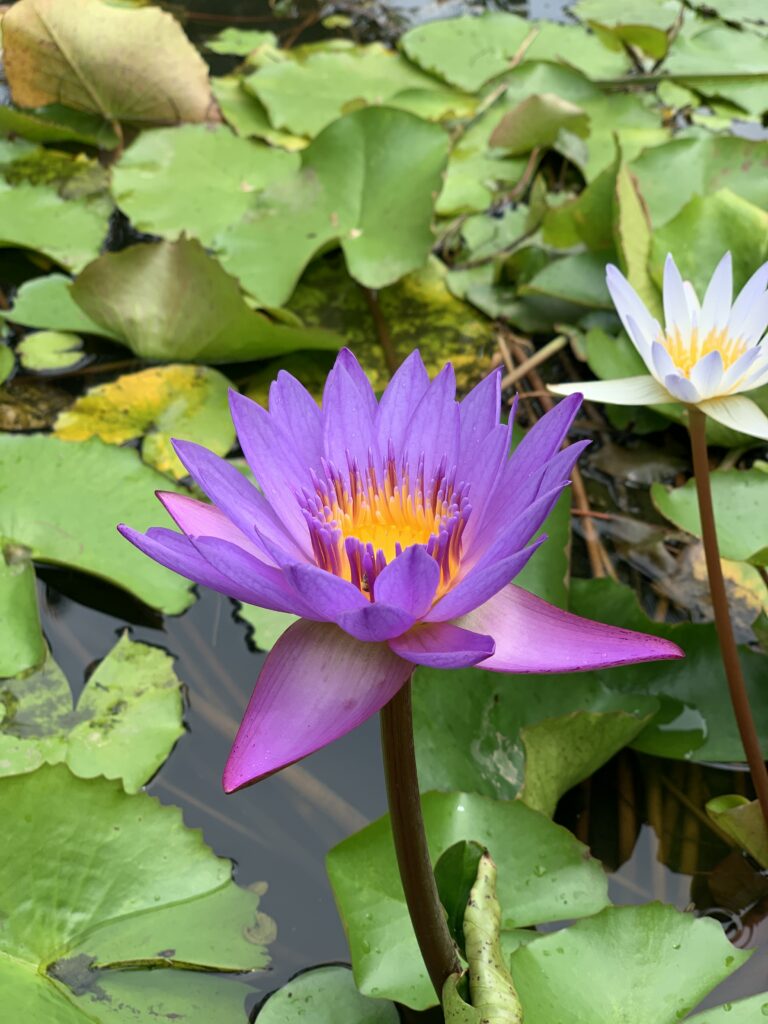Of Gods, Myths, and (Holy) Spirits
The encompassing narratives and symbolism purple represents are connected like a spider’s web.
For example, we can trace the narrative of wealth and status to purple’s representation of religion, spirituality, and mythology. If emperors and kings were understood to have a divine connection to a higher power, and if they were also the rich and powerful (aka. the only ones socio-economically able to afford purple clothing), then linking the narrative of purple as wealth and status to one of divinity, spirituality, and wisdom isn’t a stretch.
Ancient leaders equal a connection to the gods. Ancient leaders equal wealth and power. Ancient leaders comprise some of the few that are adorned by purple clothes.
Thus, purple comes to represent the narrative of wealth and divinity. Not that far of a hop, skip, and jump away, huh?
Throughout history, purple danced on a blurred line between this narrative of wealth and status and this narrative of divine connection.
If we’re going down this rabbit hole (and doing it right), then we need to take a turn into the specific connections purple has had with different religions, like Catholicism, Judaism, Hinduism, and Buddhism.
Catholicism
Going back to purple’s web of narratives, we can trace the narrative of wealth and status to the use of purple in the Catholic context.
Purple has come to represent themes of penance, prayer, personal sacrifice, sorrow, mourning, and redemption, but these themes themselves come from the narrative of wealth and status. Jesus Christ was ordered to wear a purple cloak during his crucifixion as a way to mock his regal status, and thus, purple cloaks are commonly used in the Advent season. Now, purple represents Christ’s sacrifice, as well as prayer, mourning, sorrow, and penance.
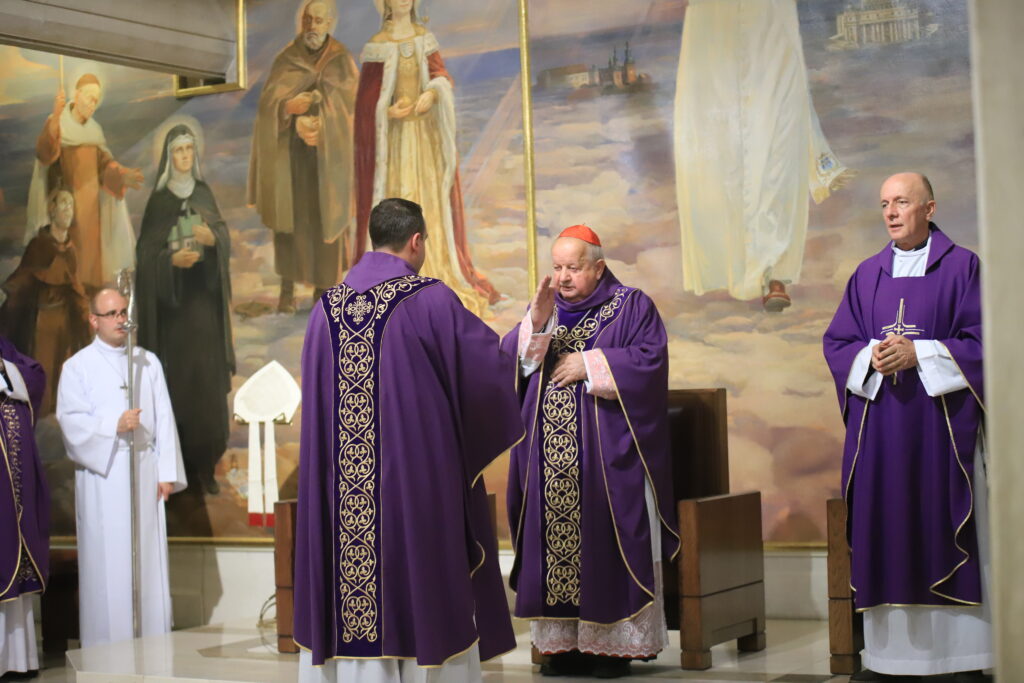
Here, we can see how dynamic the narrative of purple can be. Purple historically symbolized wealth and status. But Christ’s journey, believed to be filled with challenges, obstacles, faith, and joy, reshaped the narrative of purple, imbuing it with new meanings, connections, and norms. This narrative contrasts with purple’s origins (at least with regard to clothing).
From a narrative of wealth, status, power, and desirability, the narrative of purple took a 180 degree turn and was reshaped into one of penance, sorrow, and redemption in the Catholic tradition. Purple cloth was used to call upon its original meaning of wealth and status as a tool to mock. However, from this story, we now have an additional narrative of purple clothing that is connected to religion.
Purple…and the Seven Deadly Sins?
Out of lust, greed, envy, gluttony, pride, sloth, and wrath, what sins would you associate with the color purple?
Pride is a common answer, but purple is not limited to one sin.
Subjectively, depending on personal background, perceptions, lens, culture, etc., you might associate purple with sloth (violet can symbolize slowness, darkness, laziness) or even wrath (royal purple can symbolize revenge).
In short, it can mean what you want it to mean. That’s the beauty of social constructs!
Judaism
The significance of purple in Judaism comes from the composition of the color.
Purple is a secondary color from the combination of the primary colors of red and blue. We can analyze this in a million different ways. In Judaism, red signifies sin and blue signifies a “glorification of God”; therefore the mix of these two colors and their symbols create purple, which comes to mean “redemption and purification.”
However, in the Jewish tradition, purple also holds the narrative of wealth, class, power, and nobility due to the difficulty in its production and acquisition.
Another interpretation of the two colors in composition implies the concept of separation and unity. The relationship of red and blue symbolizes the masculine and feminine. Red, the color of blood, connects to a women’s menstrual cycle. Blue as a symbol of the masculine is as seen in the wearing of the tallit, a string typically worn only by men. Therefore, purple, “is the mixture of the two together—a reminder that it is not only the unique ways we seek God, but also what we share in our search that is important,” according to Rabbi Irwin A. Zeplowitz.
Rabbi Zeplowitz also provides an interpretation of the intermixture of red, blue, and purple as a representation of the relationship between humanity and the divine. As he writes:
…blue is often associated in Jewish sources with God. The color of the sea and sky, it is a reminder of the grandeur and spaciousness of the universe. Red ( adom ) is connected to the earth ( adamah ) to which we as humans ( b’nei adam ) are inextricably rooted. And purple? Again, it’s emblematic of where God and we ‘meet.’
The two colors are different, unique, and invoke diverse reactions and emotions—they are separate. Yet, the two colors combine in unity on a similar path of spirituality. For me, it brings forth a reflective question: In what ways are we separate, and in what ways are we united? How do we separate ourselves and how do we unite ourselves?

SOURCE: Plate VIII from A Nomenclature of Colors for Naturalists : and Compendium of Useful Knowledge for Ornithologists by Robert Ridgway (1886).
Hinduism & Buddhism
Within some Hindu yoga traditions, purple’s importance is emphasized through its connection with the Sahasrara, or ‘crown,’ chakra.
Chakras are spiritual wheels of energy within all of us. There are seven chakras: the root chakra, the sacral chakra, solar plexus, heart, throat, third-eye, and finally the crown chakra. The final chakra, our crown chakra, aka our purple chakra, represents spirituality, consciousness, and enlightenment. Since the crown chakra is located at the top of the head, it is often associated with the connection between “the Divine” and the “Higher Self,” according to the South Asian publication SEEMA. Thus, purple comes to be associated with “an awareness that there is more to life than meets the eye.”

In Buddhism, purple symbolizes rank due to how arduous the production process for purple dye was before the 1800s. High-priests and monks in the Buddhist religion wear different robes of purple, which not only convey their rank, but also their importance and role in society.
Furthermore, the purple lotus is a sacred symbol and story in Buddhism. The beautiful and vibrant lotus flowers emerge from murky waters. A deeper meaning of rebirth, resilience, and the strength and beauty that surface from hardships and obstacles is the lotus flower’s hidden story.
Historically, Buddhists found kinship with the journey of the lotus flower: “The noble eightfold path [of mysticism] is represented by understanding, thought, speech, action, livelihood, effort, mindfulness, and concentration. The purple lotus, in particular, reminds the Buddhists of this path. The purple lotus holds the keys to creativity, royalty, dignity, extravagance, and wisdom” (Petal Republic Team).
The Zen saying “may we exist in muddy water with purity, like a purple lotus” is a reminder to move through the murky waters of life in order to bloom into something beautiful, strong, and enlightened.
The purple lotus is not simply a flower. Its anatomy and surrounding environment, its resilience and strength to blossom into a striking beauty, holds significance and imbued meaning as we find relatedness with our humanity. The arresting, purple color of the lotus that catches your eye and incites reflection is the result of intricate interactions with the natural world, altered by time spent with sunlight, moonlight, varied temperatures, and weather. The purple lotus carries a narrative of wisdom—of “the” journey, of spiritual awakening, and of mysticism.
What is your purple lotus story?
How have you connected with the natural world to blossom into your own strikingly beautiful and unique color of purple?
Spiritualism & Mythology
In other spiritual traditions and practices, the color purple carries on this symbolism for mysticism, wisdom, psychic ability, spirituality, divinity, royalty and nobility, and creativity. Purple is used in various ways from purple candles, to purple cloth (to wear or for altar purposes), from purple crystals and gems, to purple flowers (for offerings or practice).
For example, purple ribbons are worn not only to represent Pagan pride, but also to push against misinformation being spread about Wicca.
Deities in Purple
In polytheistic religions, often specific deities will be associated with the color purple.
Here are just a few:
SOURCE: https://magickalspot.com/the-color-purple/
- Iris — In Greek mythology, Iris is the goddess of the rainbow and messenger of the gods. She is often depicted with wings and carrying a staff with a purple ribbon, symbolizing her connection to the color purple.
- Dionysus — Dionysus is the Greek god of wine, celebration, and fertility. He is often associated with the color purple due to the purple robes that he wears and the purple grapes used to make wine.
- Artemis — In Greek mythology, Artemis is the goddess of the hunt, wilderness, and childbirth. She is sometimes depicted wearing purple clothing or with purple animals, such as purple deer or purple boars.
- Amaterasu — In Shintoism, Amaterasu is the sun goddess and the highest deity in the pantheon. She is often depicted wearing a purple robe and is associated with the color purple due to her connection to the sun and its rays.
- Anhur — In Egyptian mythology, Anhur is the god of war and the patron deity of the city of Thinis. He is often depicted wearing a purple headdress and is associated with the color purple due to his connection to royalty and power.
- Krishna — In Hinduism, Krishna is a major deity and is considered to be an avatar of the god Vishnu. He is often depicted wearing purple clothing and is associated with the color purple due to his divine nature and association with the universe’s divine energy.
Within different systems of belief, purple tells a story. In wearing purple, you are representing that story. Whether a symbol of spirituality and wisdom in a Buddhist context, of penance in a Catholic context, or of a spiritual journey of unity and separation in a Jewish context, purple is a marker within many religious narratives.
It is interesting to highlight the color purple because it has such a diverse and rich history. Amongst different religions, purple represents diverse narratives and cultural differences.
I encourage you to think about how these different narratives of purple came into being.
Was it the influence of social norms, cultural differences, previous narratives, oral transmission of history, or scarcity that impacted these differing formations of narratives centering purple?
WHERE TO NEXT?
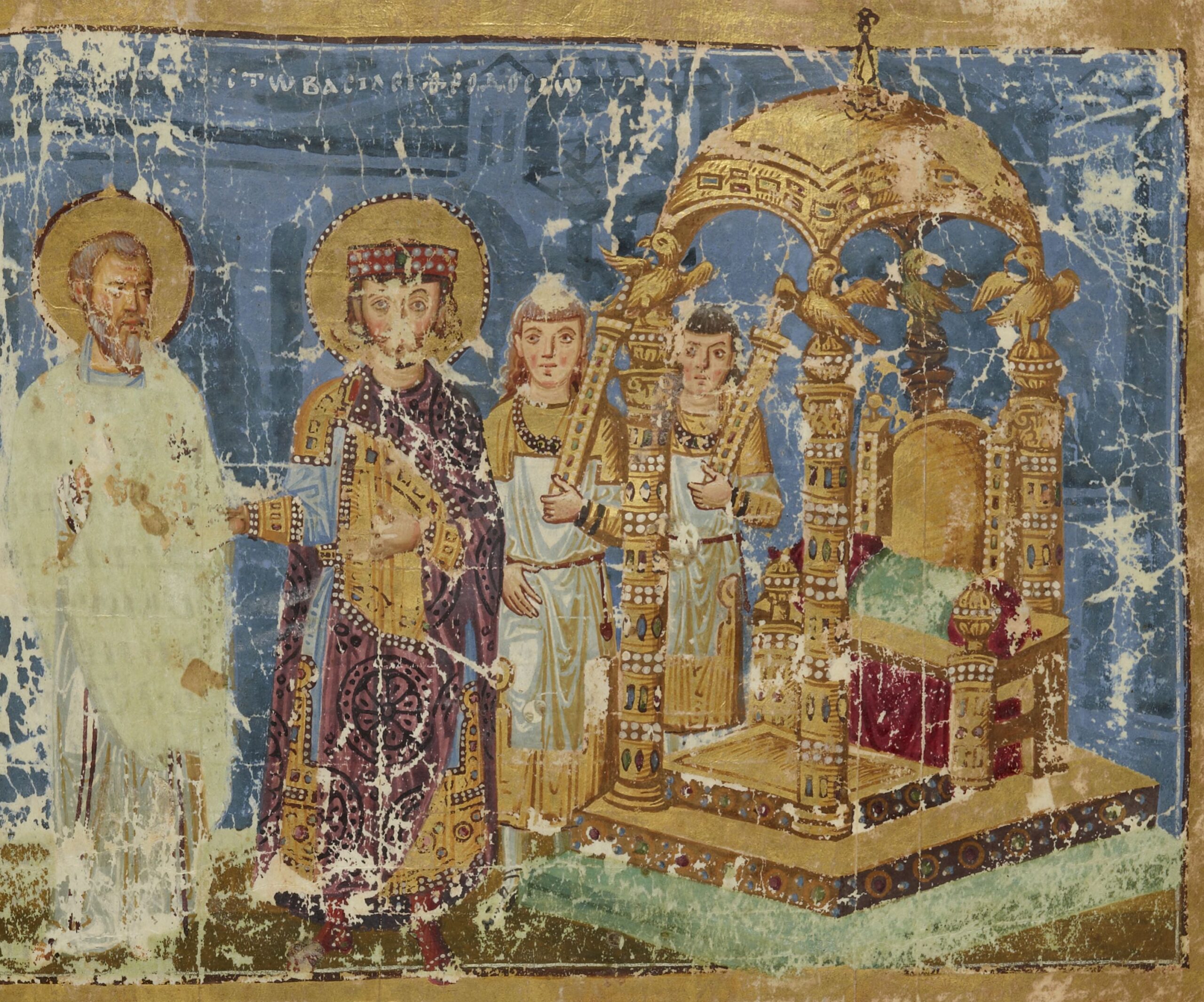
A Caste in Cloth
IMAGE: Detail from a Greek manuscript dated 879-883 AD, now held at the National Library of France.
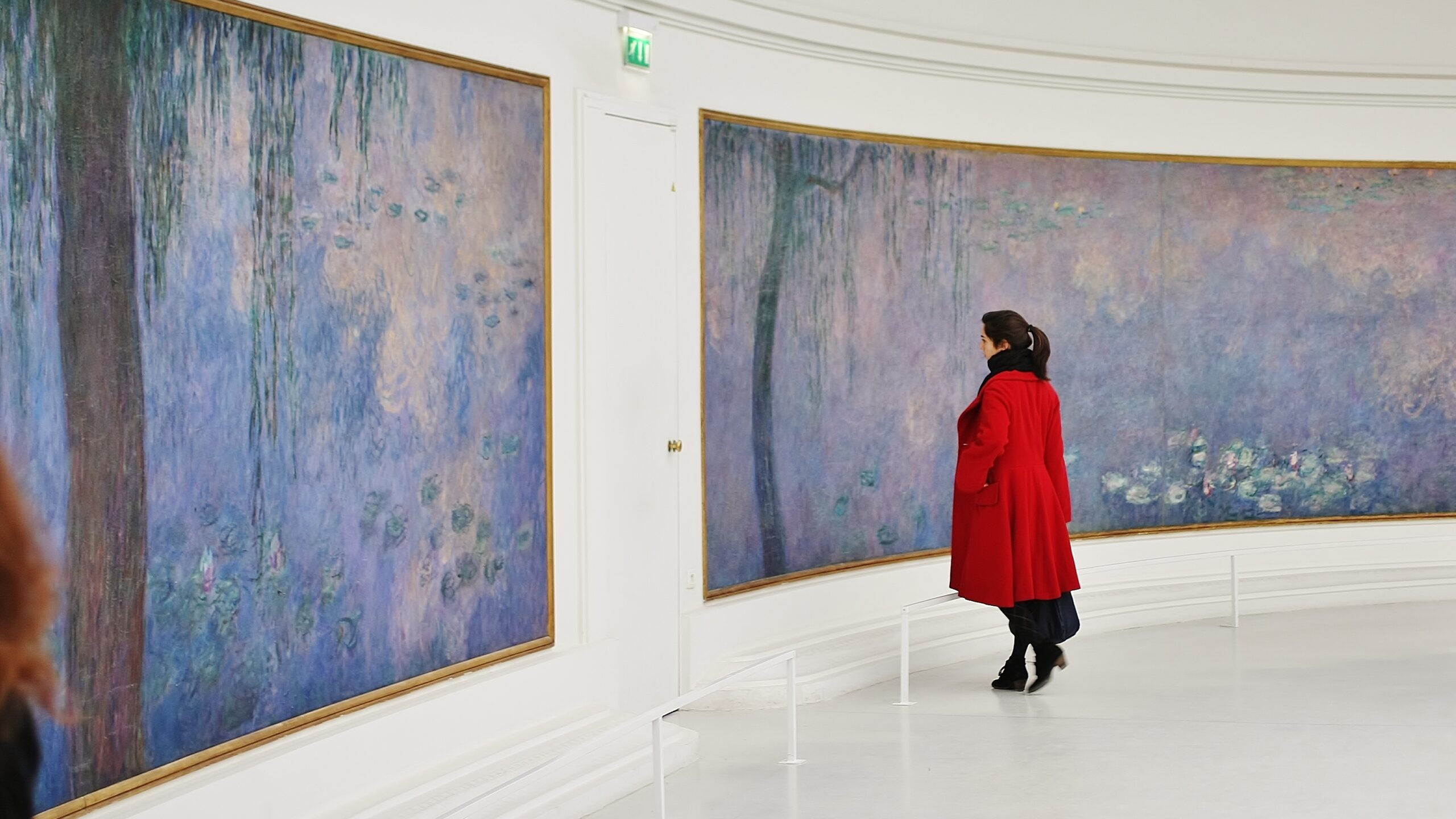
A “Pop” of Culture (and Color)
A museum patron admires some of Claude Monet’s Water Lilies paintings in the Musée de l’Orangerie. (PHOTO CREDIT: Adrian Scottow [CC BY-SA 2.0 DEED])
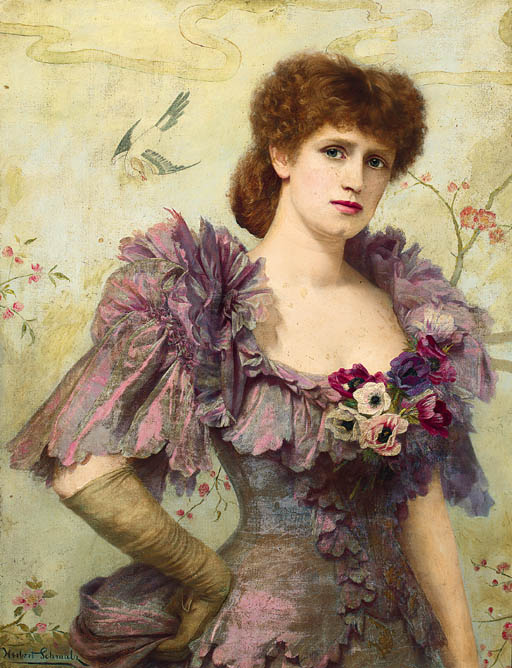
The Politics of Purple
British actress and producer Lillie Langtry. (SOURCE: Langtry illustration by Herbert Gustave Schmalz , circa 1900)

